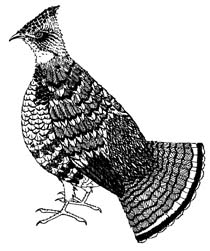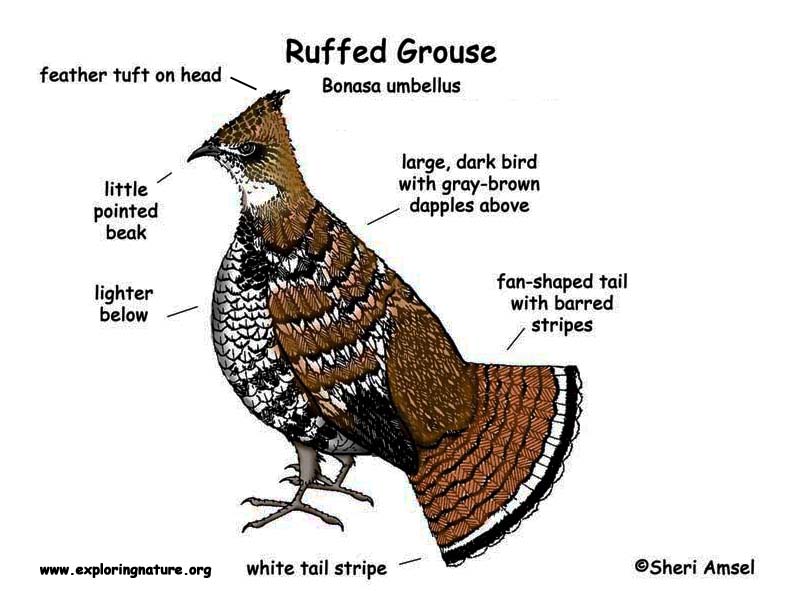

They are found in Alaska, all over Canada and the northwestern and northeastern U.S. down to Alabama.
They live in mixed forests and are seen along roadways. They spend the winter in conifer forests.
They are a large, dark bird with gray-brown dapples above. They are lighter below. They have a fan-shaped tail with barred stripes. Their colors and markings help them blend in (camouflage) to the forest floor where they feed in the spring, summer, and fall.
Males make a “drumming” sound in the spring to attract a mate. They spend most of their time on the ground but will burst into flight when they are alarmed. This works to scare off predators. They are active during the day (diurnal) feeding from dawn to dusk. In the winter, they may dive into a snow drift to roost for the night. This keeps them warm and avoids tracks leading predators into ther hiding place. When exiting in the morning, they burst out of the snow scaring away any nearby predators.
They eat tree buds, and some leaves, nuts and fruit and insects. Tree buds are especially important for their winter survival.
They make a nest in the dead leaves next to a tree or rock for cover. The female lays more than a dozen (7-16) light brown eggs that blend in with the dead leaves.
Kingdom: Animalia
Phylum: Chordata
Subphylum: Vetebrata
Class: Aves
Order: Galliformes
Family: Phasianidae
Subfamily: Tetraoninae
Genus: Bonasa
Species: B. umbellus
When you research information you must cite the reference. Citing for websites is different from citing from books, magazines and periodicals. The style of citing shown here is from the MLA Style Citations (Modern Language Association).
When citing a WEBSITE the general format is as follows.
Author Last Name, First Name(s). "Title: Subtitle of Part of Web Page, if appropriate." Title: Subtitle: Section of Page if appropriate. Sponsoring/Publishing Agency, If Given. Additional significant descriptive information. Date of Electronic Publication or other Date, such as Last Updated. Day Month Year of access < URL >.
Amsel, Sheri. "Grouse (Ruffed)" Exploring Nature Educational Resource ©2005-2024. December 15, 2024
< http://www.exploringnature.org/db/view/Grouse-Ruffed >

